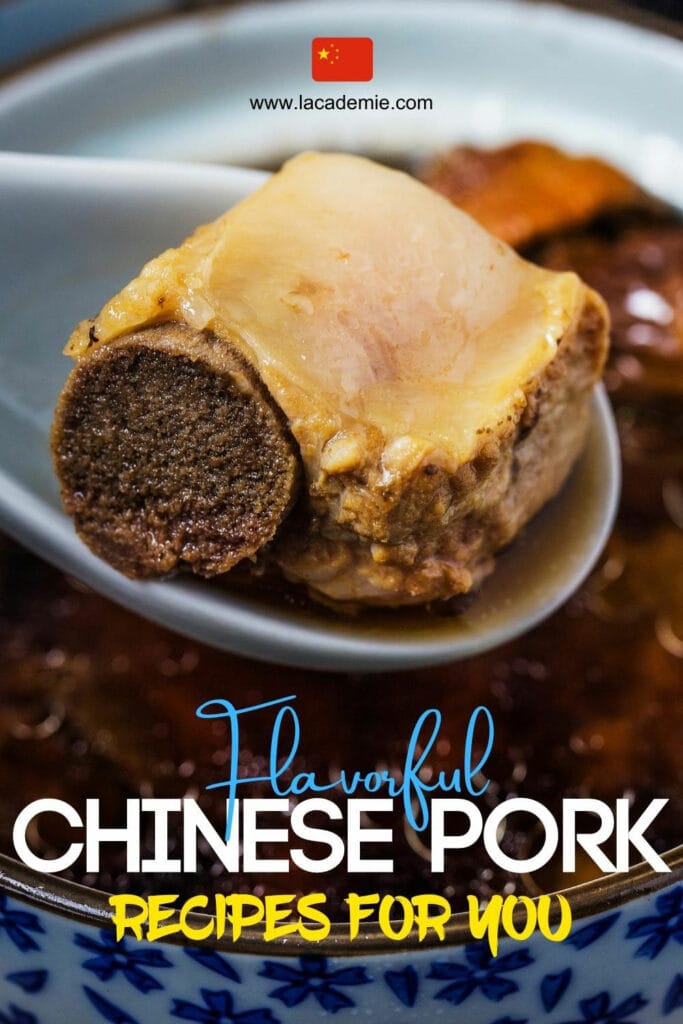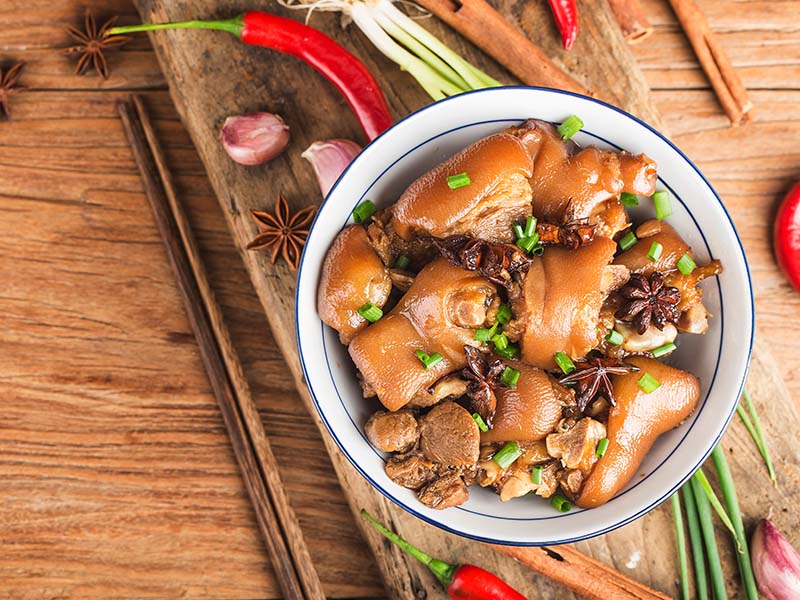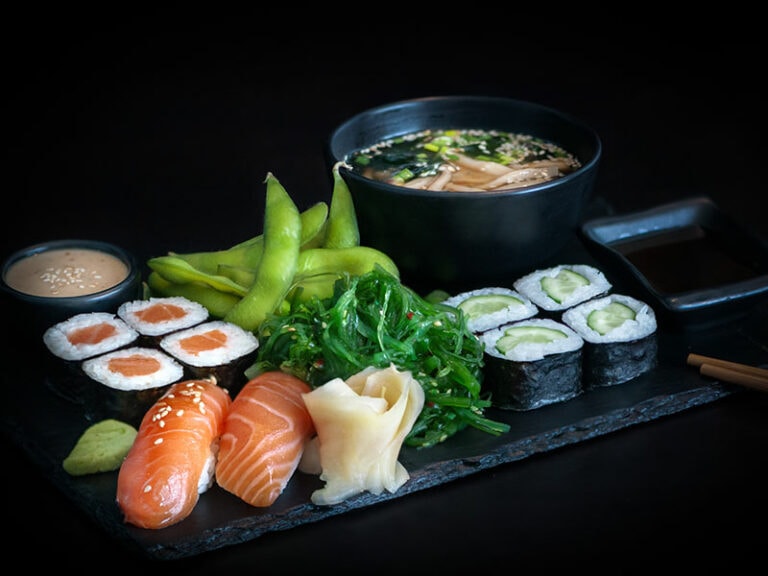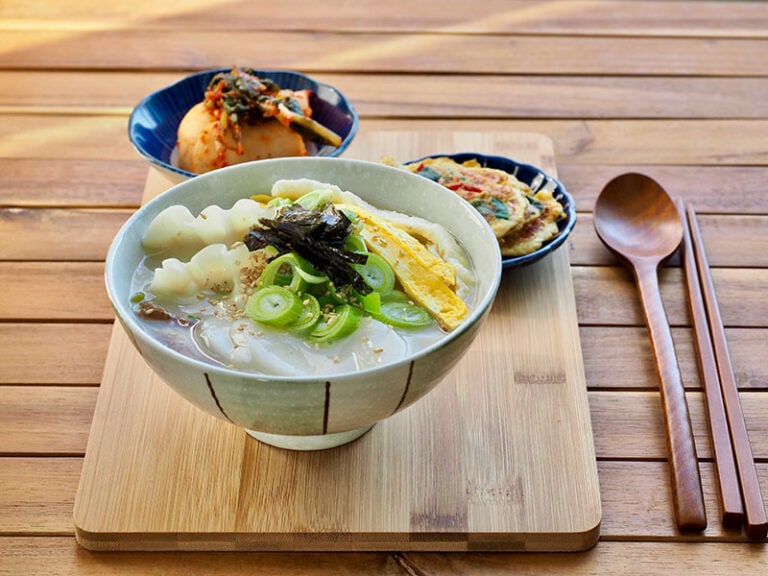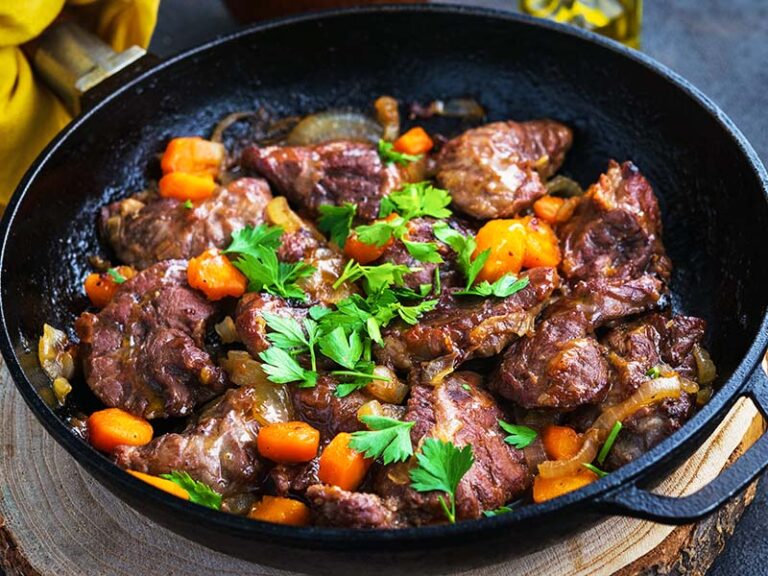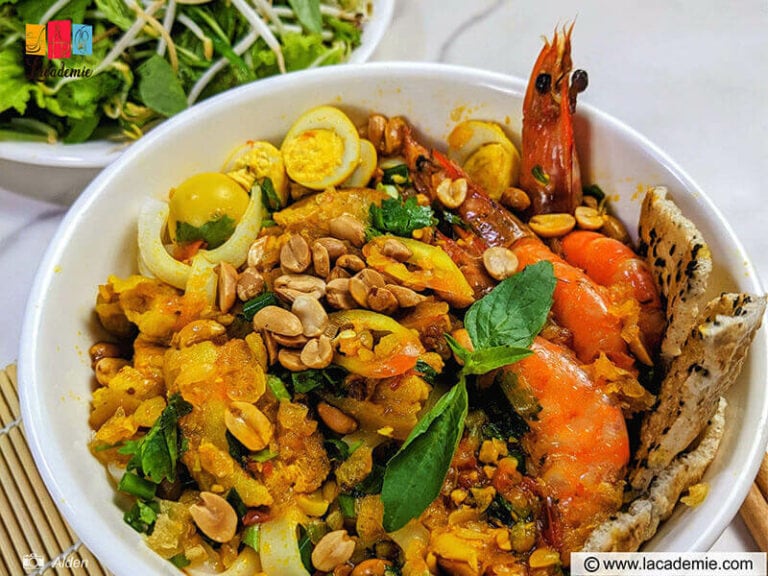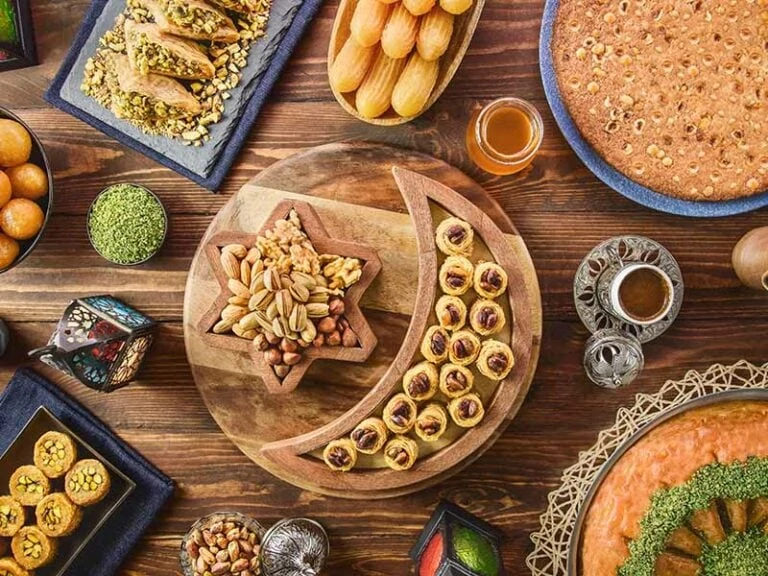When it comes to Chinese pork recipes, you will have a hard time choosing since there are many. From simple stir-fry dishes to more elaborate grilled delicacies, each of them adds a unique and interesting side to Chinese gastronomy.
One explanation for this huge variety is that Chinese people love eating pork more than any other type of meat. This love influences provinces to come up with ways to incorporate pork into many regional specialties, further diversifying the menu.
And it’s my time to bring you on another great culinary journey; this time, let’s uncover Chinese pork cuisine. With these cooking instructions straight from China, you can finally experience an authentic oriental meal at home.
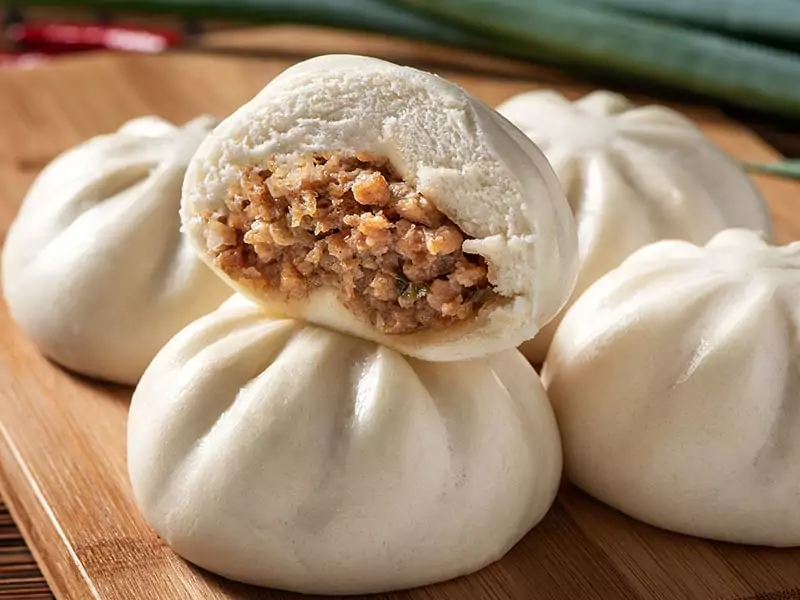
Incredible Pork-Based Recipes From China
This extensive list below consists of some of the most iconic Chinese dishes that you can make with pork. Not only are they easy to make, but they also contain exotic and flavorful qualities that you can’t find anywhere else.
1. Chinese BBQ Pork (Char Siu)
Total time: 60 minutes
The best place to start is the ever-popular Char Siu, or Chinese BBQ Pork. This delicacy comes from the south of China, particularly Guangdong cuisine. Aside from China, you can find Char Siu in many restaurants and noodle shops across the world.
Unlike other BBQ pork, this Chinese version is highly aromatic, thanks to the addition of five-spice powder. This combined form of Chinese seasoning consists of star anise, Chinese cinnamon, Sichuan pepper, cloves, and fennel seeds.
You mix the five-spice powder with cooking wine, soy sauce, and hoisin sauce (a thick and sweet black sauce) to create a marinade. This mixture causes the meat to have its signature red skin and helps the seasoning penetrate the meat better.
This tutorial will be perfect if you want to make Char Siu.
2. Pork Stir-Fried Noodles (Chow Mein)
Total time: 35 minutes
Chow Mein, meaning Stir-Fried Noodles, is a famous Chinese noodle recipe from southern cuisine. One interesting fact is that this delicacy is more popular outside of China than inside, thanks to many Chinese immigrants popularizing it.
Instead of making the noodles soft and chewable, the recipe requires you to pan-fried the noodles until they become brittle. This texture adds a new layer of texture to the Chow Mein. This will result in the noodles absorbing the flavors much better.
Once you have the noodles, you can stir-fry the pork with bean sprouts and mushrooms. Add in soy sauce and broth to create a sauce. When the sauce thickens, pour it and the pork over the noodles. The meat really improves the savoriness of the sauce.
3. Hunan Pork Stir-Fry (Xiao Chao Rou)
Total time: 10 minutes
From the south-eastern province of Hunan, I will move on to another great pork-based recipe. The Hunan Pork Stir-Fry is relatively easy to make and one of the best stir-fry dishes if you are on a diet since it has a lot of vegetables.
The best cut of meat for this recipe is the pork belly thanks to the richness of the fat. You have to cut the meat thinly so each slice can absorb the soy sauce easily. If you want to have a little kick to your taste buds, add in chili peppers and garlic.
And it wouldn’t be a complete Hunan specialty without fermented black beans. When you stir-fry the black beans with the meat and vegetables, they also add a hint of saltiness to the overall flavor of the delicacy.
4. Chinese-Style Pork Stir-Fry (Moo Shu Pork)
Total time: 20 minutes
Moo Shu Pork is not only a delicacy from the north of China, specifically the Shandong province, but it is also a constant part of the Chinese menu around the world. This pork stir-fry is named after the Osmathis flower due to the dish’s colorful appearance.
In this recipe, the pork chop is the recommended cut. However, the cut is also quite bland, so you need to marinate it beforehand. The marinade is from familiar Chinese condiments like oyster sauce, soy sauce, and vinegar. This mixture can bring out the savoriness of the meat.
Aside from the pork, you also have to put in the vegetables, including cabbages, chopped scallion, and mushroom. It gives the specialty a very crunchy and balanced texture. Additionally, you can also cook this Chinese delicacy with an instant pot.
The best way to have the Moo Shu Pork is to wrap it in a thick Chinese flatbread called Bing. If you don’t have access to Bing, you can use Mexican Tortilla as a replacement since it has a similar texture to the pancake.
5. Chinese Braised Pork Belly (Hong Shao Rou)
Total time: 3 hours
Hong Shao Rou, or Braised Pork Belly, is another classic Chinese recipe that you have you check out. This dish is widely available across many regions of China. That’s why you will see many differences in taste and aroma.
FYI, there is a similar version of this recipe in Vietnamese style. It is Thit Kho Tau (Caramelized Braised Pork With Eggs). Of course, there are also some differences between these 2.
For making this Chinese pork recipe, first, you need to pick the correct cut of meat. This recipe requires a pork belly with equal parts lean meat and fat. Cut the meat into smaller pieces to help the seasonings spread better.
To get that glossy sheen on the pork, you need to cook the meat in a special Chinese sauce, which includes soy sauce, Chinese cooking wine (Shaoxing wine), and brown sugar.
When you braise the meat, the mixture seeps into the meat, giving it a blend of both sweet and savory. Not only that, the fat helps the sauce stick to the meat. Due to this, you have to eat Hong Shao Rou with rice and veggies as side dishes to reduce the intensity of the flavor.
6. Peking Pork Chop (Jing Du Pai Gu)
Total time: 25 minutes
The original name of Peking Pork Chop is actually Capital Pork Chop, referring to the old capital of Nanjing. However, due to the popularity of the modern version around the world, many refer to it as Peking Pork Chop. The main ingredient is, of course, pork chops.
For this particular recipe, you should marinate the meat in cornstarch, salt, and sherry wine. This crisps up the pork chop for the cooking process, making it easy for the condiment to coat every side of the meat.
Next, combine hoisin sauce, vinegar, and Chinese five-spice powder to create the sauce. This sauce gives the meat a signature flavorful characteristic. In addition to that, when the sauce thickens up, the sticky sauce makes the meat very eye-catching with a glossy sheen.
There’s nothing better than to cook your own plate of Peking Pork Chop.
7. Braised Pork Belly (Dong Po Rou)
Total time: 10 hours 30 minutes
Dong Po Rou, or simply Braised Pork Belly, is a specialty from the city of Hangzhou, on the eastern side of China. The creation of Dong Po Rou dates back to the Song Dynasty (10th-13th century A.D), thanks to a famous poet named Su Dong Po.
The recipe of Dong Po Rou has gone through multiple stages of development. The current version I’m showing you is what most restaurants serve nowadays. First, you season the meat with a mixture of Chinese cooking wine, soy sauce, and sugar before braising.
Due to a caramelization process, it turns the pork belly very dark red. Not only affecting the look, but the braising liquid also breaks down the fat and improves the meat. Hence you never feel the oiliness from the pork belly.
However, many places usually serve Dong Po Rou in a small square portion to increase the palatability of the pork by reducing the fattiness.
8. Sticky Chinese Pork Belly
Total time: 45 minutes
There is no shortage of pork belly-based specialties when it comes to Chinese cuisine. The Sticky Chinese Pork Belly is a dish you might want to make to make your meal table a little more vibrant.
What you should get for this recipe is pork belly, chicken stock, and the glaze. First, you simmer the pork until it turns a milky white. This pre-cook process will tenderize the meat so the glaze can infiltrate a lot easier. After that, you chop the meat into smaller pieces.
Next, to make the glaze, just add brown sugar, rice wine, and soy sauce to a heated pan. Keep stirring until you get a thick and brown liquid. Add the pork belly chunks and stir-fry until the glaze covers the meat. This mixture imparts a lot of its savoriness into the meat.
9. Chinese Crispy Pork Belly (Siu Yuk)
Total time: 2 hours
Siu Yuk is one of the most recognizable southern Chinese delicacies around the globe. This version of crispy pork belly has taken over the hearts and minds of many due to its irresistible texture, where a single bite will result in an aromatic explosion.
In order to get the best out of Siu Yuk, you have to choose the pork belly cut with thick skin. This will give you a crunchier exterior during the roasting. The only seasonings you will need are Chinese five-spice powder, salt, and garlic powder.
Rub this mixture on the meat side before wrapping it with aluminum foil. Leave the skin side open in the oven. The meat will absorb the seasonings, acquiring a very herbal and savory flavor. On the other hand, the skin will start to turn dry and puff up from the heat.
Traditionally, Chinese people will have Siu Yuk with rice and stir-fried bok choy (which is a version of Chinese cabbage) for a very filling yet balanced meal.
10. Chinese Pork Dumpling (Jiaozi)
Total time: 1 hour 10 minutes
For many foodies around the world, Jiaozi is always a delightful breakfast recipe from China. From the chewy wrapper to the tender meat and the flavorful dipping sauce, there’s nothing more comforting than this.
To create the dumpling, you must wrap the pork filling in either wonton or egg roll wrappers. They are similar, but the egg roll wrapper has a larger surface than the wonton version. This can affect the size of the dumpling.
The filling is from pork, green onion, and ginger. You can season the filling with soy sauce, wine, and cornstarch. The cornstarch makes a great binder that keeps the meat together during the folding process.
And last but not least, you need to make a perfect dipping sauce for the dumplings. In this version, just mix soy sauce, vinegar, and sesame oil. The flavor is interesting, with the umami from the soy sauce and the acidity of the vinegar joining together.
11. Pork Fried Rice (Zhu Rou Chao Fan)
Total time: 30 minutes
When you feel rushed and don’t know what to make, this rice recipe from China is the best answer. This reliable type of fast food has been a Chinese staple for many years, with the first recorded recipe being in the Sui Dynasty (6th – 7th century A.D)
Different regions have their own different interpretation of fried rice. In this particular recipe, the biggest change is in the meat since you will be using Char Siu pork. This adds a ton of smokiness to the rice.
Aside from that, the majority of the ingredients are similar to other versions of fried rice. You can taste the crunchiness of the carrots, the starchiness of the green peas, and the slight spiciness of the peppers. The rice is still very aromatic with a hint of cooking wine and soy sauce.
Easy and delicious: That’s how the Pork Fried Rice will help you save time.
12. Chinese Rice Dumpling (Zongzi)
Total time: 16 hours (including many hours of marinating the pork)
As a beloved dish to both mainland and overseas Chinese, Zongzi has existed for many centuries. This version of rice dumpling has a very close tie to a certain Chinese holiday called Duan Wu, or Dragon Boat Festival to many English speakers.
Despite the simplicity in design, most of the flavors are very complex. The sticky rice makes up the outer shell. Thanks to the addition of pork fat, this layer holds the shape very well. The rice also comes with a bit of sugar and soy sauce, giving it a slight sweetness and savoriness.
For the filling, I highly suggest the pork belly since this cut is the best at soaking in the seasonings. With a simple combination of five-spice powder, Shaoxing wine (Chinese cooking wine), and soy sauce, the meat will become quite fragrant.
13. Sweet And Sour Pork (Gu Lu Rou)
Total time: 30 minutes
The sweet and sour style is a very popular cooking method within the Chinese culinary world. Originating during the Tang Dynasty (7th – 10th century A.D), this technique has evolved to encompass a variety of ingredients.
In this entry, I’d like to introduce you to the Sweet And Sour Pork. This version is very well-known across the world thanks to its interesting use of deep-fried pork and the sauce. To get that perfect crispy skin of the pork, you have to deep-fry the meat twice.
With the sauce, a mix of lemon juice, chili sauce, and ketchup gives a nice blend of tanginess and sweetness. When you’re done with the frying, combine the sauce with the pork. The sauce will bind with the skin, and when you bite, all the savory goodness will explode in your mouth.
14. Steamed Pork Dumpling (Shumai)
Total time: 1 hour 15 minutes
Shumai, or Steamed Pork Dumpling, is closely associated with well-known Dim Sum cuisine that the Chinese usually have around brunch time. From simple street food, it has grown into a recognizable delicacy, not just in China but in many countries as well.
What makes Shumai a beloved specialty for many Chinese is its simplicity. Anyone can make Shumai with just filling and wrappers. In order to make the filling, you mix minced lean pork with shrimp and mushrooms.
The best way to cook Shumai is using a bamboo steamer. But if you don’t have access to it, just use a metal steaming rack instead. The steam will keep the Shumai from being too dry. That’s why each bite of this delicacy will be full of juicy delights.
15. Lion’s Head Meatballs (Shi Zi Tou)
Total time: 30 minutes
Despite its fancy name, Shi Zi Tou is just standard meatballs. The reason why people call it Lion’s Head is due to the meatballs resembling the Chinese guardian lions, or the foo dogs.
This version of meatballs is often served as a traditional Chinese New Year dish. This type of meatball originates from the eastern side of China, particularly in a culinary region called Huaiyang.
Lion’s Head meatballs consist of two parts: the pork meatballs and the thick black sauce. For the meatballs, you only have to mix the minced pork with bread crumbs and egg. This helps the meat together when you sear the meatballs on a heated skillet.
For the sauce, you combine chicken broth, brown sugar, and soy sauce on a stove until the sauce thickens up. This delightful sauce adds a layer of sweetness to the savory meatballs. Lion’s Head meatballs go very well with a bowl of white rice.
16. Chinese Steamed Bun (Baozi)
Total time: 1 hour 10 minutes
Steamed buns, or Baozi, is a popular recipe all across Asia. With its origin dating back to the Song Dynasty of China like Dong Po Rou, Baozi has grown so much more than just a simple Chinese delicacy.
There are two types of steamed buns. The type without fillings is referred to as “Matou” while “Baozi” is the version with fillings. In this entry, I will go into the Baozi version.
To make the dough, you must combine flour, sugar, and water. This easy mix is what makes the dough so fluffy and airy. The added sugar gives an interesting flavor because it contrasts with the saltiness of the filling.
With the filling, you can simply use Chinese BBQ pork. Combine it with condiments like soy sauce, sugar, and oyster sauce. The smokiness from the pork complements the savory mixture. This results in a very dish that is both fun and filling to eat.
This tutorial can give you the steps to recreate authentic Chinese Baozi.
Adding A Chinese Flair To Your Pork Dishes
As you can see from all the entries in this list, China has no shortage when it comes to pork-based dishes. The country has come up with many fascinating ways to use this ingredient in its cuisine.
It’s no wonder that China is becoming the top destination for many pork lovers out there. I hope that all of the recipes above will provide you with inspiration to keep the dining table vibrant, creative, and delectable.
And with that, thank you for journeying with me this far. Before you go, don’t forget to hit the thumbs-up button and share this article on your social media accounts. Until we meet again on another culinary adventure, have a great day!
Nutrition Facts
8 servings per container
- Amount Per ServingCalories298
- % Daily Value *
- Total Fat
6.3g
10%
- Saturated Fat 2.1g 10%
- Cholesterol 124mg 42%
- Sodium 131mg 6%
- Potassium 754mg 22%
- Total Carbohydrate
13.3g
5%
- Dietary Fiber 0.1g 0%
- Sugars 12.2g
- Protein 44.7g 88%
- Calcium 15%
- Iron 2%
* The % Daily Value tells you how much a nutrient in a serving of food contributes to a daily diet. 2,000 calories a day is used for general nutrition advice.
